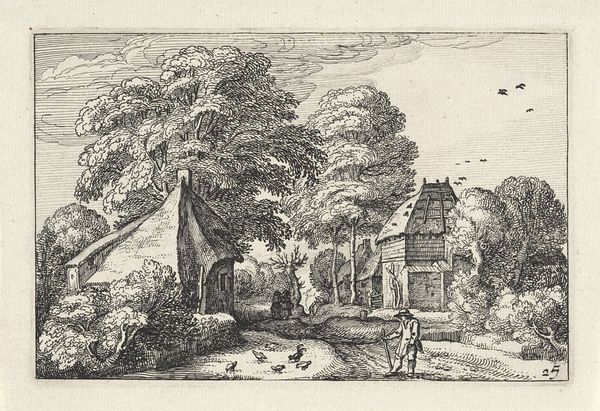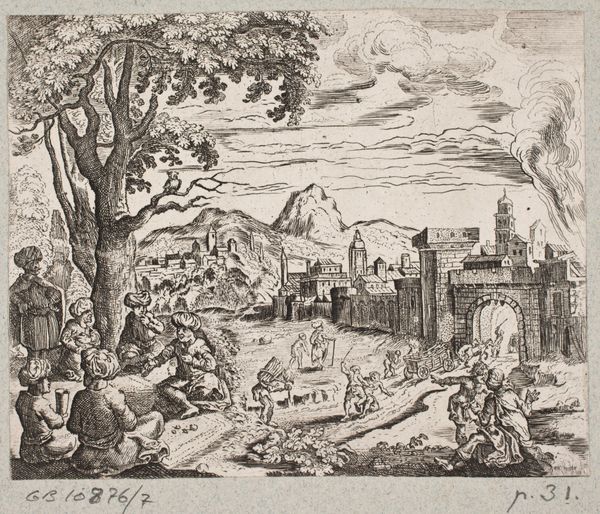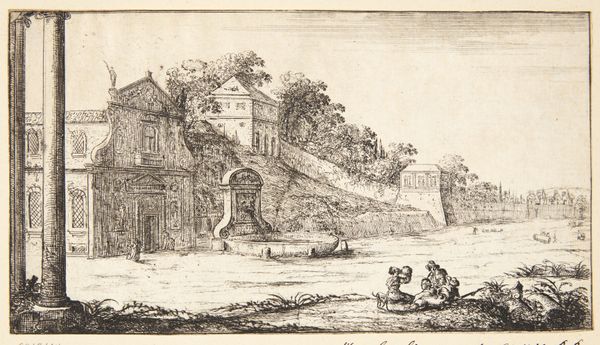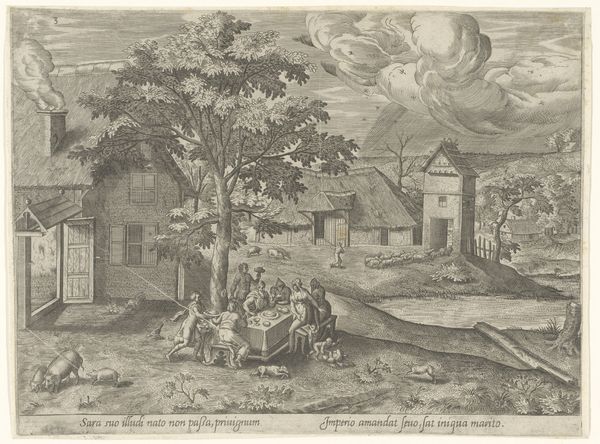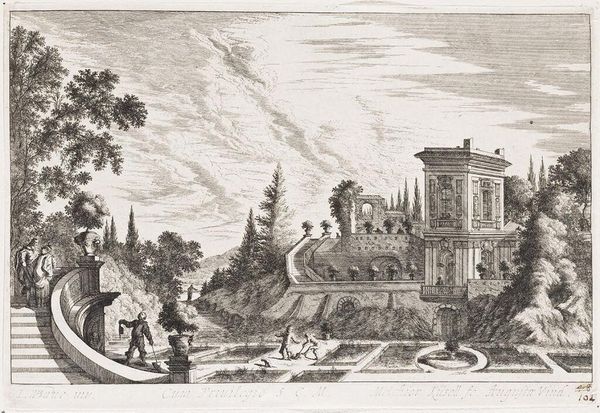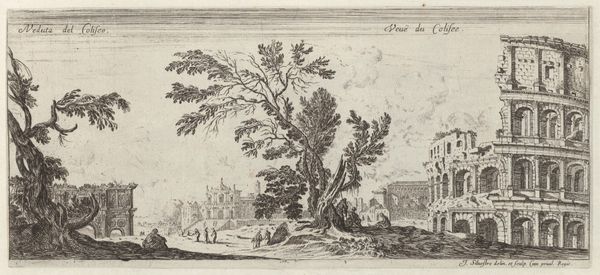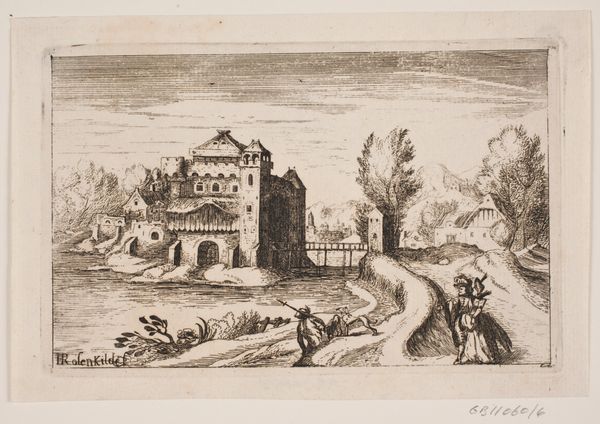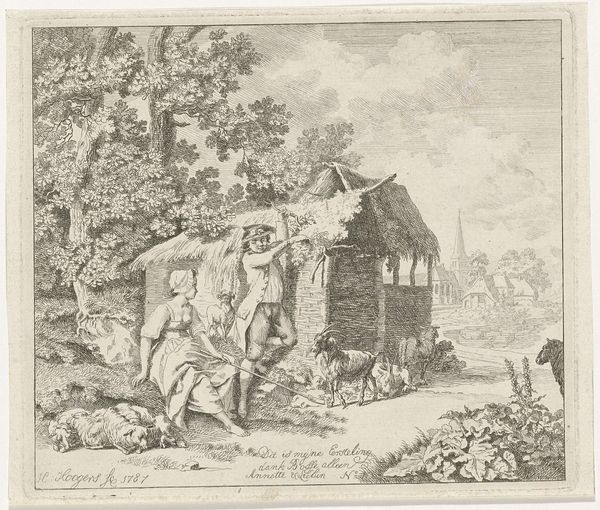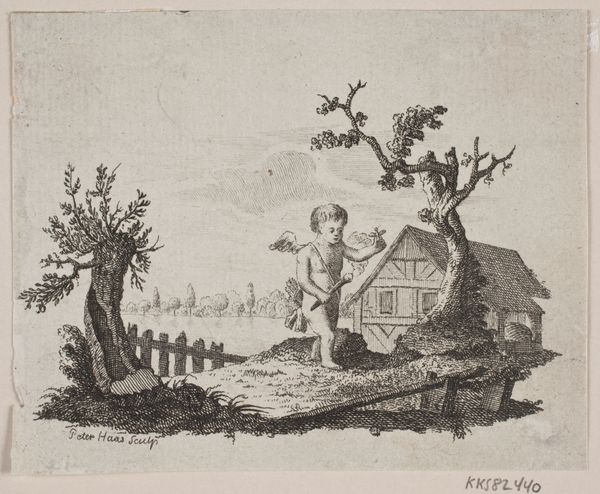
drawing, print, etching
#
drawing
#
baroque
#
dutch-golden-age
# print
#
etching
#
landscape
Dimensions: Plate: 6 1/8 × 11 1/4 in. (15.5 × 28.5 cm) Sheet: 6 9/16 × 11 11/16 in. (16.7 × 29.7 cm)
Copyright: Public Domain
Editor: So, this etching by Jan van de Velde II, “Square Tower Used as Inn near a River," dates from around the 1640s. The scene has a quiet, almost melancholy feel. There’s a real contrast between the imposing architecture and the tiny figures. What do you see in this piece? Curator: I see a layered narrative reflecting the societal tensions of the Dutch Golden Age. While celebrated for its artistic and economic prosperity, it was also a period marked by strict social hierarchies and colonial exploitation. Notice how the tower, possibly repurposed, looms over the seemingly mundane activity of travelers. Editor: That’s interesting, I was just looking at it as a snapshot of daily life. Curator: Precisely! Van de Velde isn't just documenting a landscape; he is hinting at the power dynamics inherent in land ownership and commerce. Consider who likely owns the Inn, versus who seeks lodging. What stories might they carry? How does the establishment profit from the labor of others? The river also evokes connections to global trade networks and colonial ventures that enriched the Netherlands. How do you think this seemingly innocent landscape masks its complicity? Editor: I guess I hadn’t thought of it like that, but the trade connections make sense. The figures now appear to me as part of this bigger global process of colonialism. Curator: Exactly. Think of it in relation to the landscapes of the time produced by, say, Jacob van Ruisdael, which evoke the glory and beauty of nature – yet that idealization often obscures the role those lands played in supporting an economic system built upon the labor of many and often benefiting few. Editor: This definitely encourages me to dig deeper than just the surface-level representation. Thank you. Curator: Absolutely, art invites critical engagement with its historical and social context. It challenges us to consider whose stories are being told and whose are being marginalized.
Comments
No comments
Be the first to comment and join the conversation on the ultimate creative platform.
